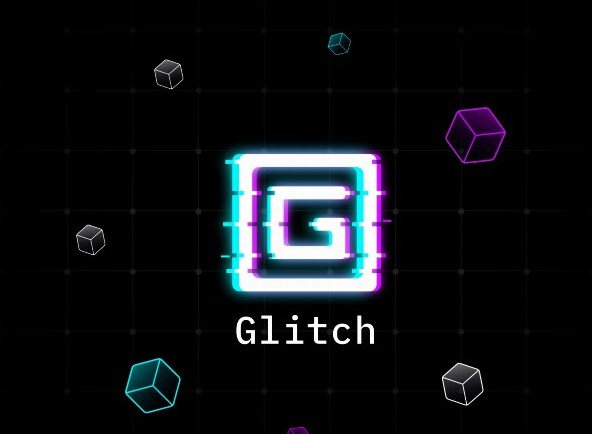Financial systems are facing a massive overhaul with decentralized finance (DeFi) applications at the forefront of this revamp. A steady influx of decentralized solutions is paving the way for fewer authorities and more control in the hands of the end-users. Right now, there is constant anticipation for how these solutions will be adopted by the masses.
Further excitement is brewing in DeFi circles, with Glitch Finance set to unveil its testnet on June 30. This is a vital step in realizing its dream of providing a scalable infrastructure for decentralized finance applications and trustless money markets. The testnet launch is the culmination of six months of frenetic work and a testimonial to the team’s commitment to their vision of decentralized finance for all.
Testnet launch — a Testament to the Growth of Glitch Finance
If there is one characteristic that defines the crypto space, it must be ‘dynamic.’ Keeping pace with this market is no small effort, and Glitch Finance has been notably proactive in its approach to building infrastructure.
In March 2021, the project issued its whitepaper and also announced the development of two highly-awaited dApps. First, the GEX — Glitch Decentralized Exchange — a peer-to-peer exchange that shall allow assets to be traded efficiently. And the xBridge, which facilitates cross-chain token transactions in just a few clicks.
The team followed this up with a bridge to the Binance Smart Chain (BSC), a move that not only added value to the $GLCH token but also further emphasized the growing need for interoperability for mass adoption of crypto solutions. Additionally, in a significant stride towards scaling the project, Glitch announced a partnership with Polygon (Matic) to connect their ETH-compatible blockchain networks and push towards greater dApp efficiency. In the same timeframe, Glitch’s native token $GLCH was listed on Kucoin, along with a few other exchanges, providing a major bump to the token’s visibility.
The fact that Glitch Finance is finally approaching testnet and mainnet launches means they’re at a point where theory becomes reality. And as such, they’ve introduced the Glitch Grants Program to encourage development on DeFi’s newest chain. Like many others like it, the grants program is a growth-focused initiative that allocates $2 million to support projects developing financial solutions on GLITCH.
The launch of the GLITCH Testnet on June 30 will be a major milestone in the project’s growth, and it will allow for comprehensive testing of the entire infrastructure. With a recent announcement that the team will be working with Kurtosis on integration testing, Glitch will receive critical feedback to make sure the foundations of the network and its smart contracts are robust from the start.
Overview: the GLITCH protocol
High transaction fees have created undeniable issues for many DeFi applications in the last few months. Coupled with the growing congestion in certain host blockchains, the feasibility of these decentralized applications has been all but lost.
To provide a solution, Glitch Finance is aiming to be an operating system designed explicitly for trustless money markets and other DeFi solutions, i.e., they’re adding another rail for dApps to run on.
For these permissionless solutions to be adopted by the masses, faster transactions at low fees are an absolute requirement. Hence, Glitch has been built with three key things in mind.
Consensus
Glitch Finance has employed a consensus protocol known as Delegated Proof of Stake (DPoS) to establish a collective agreement. Being innate energy-efficient, DPoS allows for both cheaper and quicker transactions. Employing DPoS at an early stage sets GLITCH up to support transactions of high volume post-mass adoption. The DPoS protocol also allows for fair governance in the Glitch DAO by depreciating voting power over time.
Interoperability
Users and devs alike can benefit from the low costs and the high speeds of the GLITCH Network even while using dApps built on other blockchains. By token wrapping assets as a GRC-20 coin, cross-chain utility is realized with Glitch. Furthermore, Glitch is focused on building cross-chain bridges to other ecosystems to enhance interoperability.
Revenue Sharing
Unlike other projects that incentivize users by sharing a part of the gas fees, Glitch has relied on its dApps and usage. Nearly a quarter of their revenue and fees are shared to stakers and holders in the form of $GLCH. This system of revenue sharing is touted to be a key driver of user adoption. Likewise, devs are incentivized to generate revenue by contributing to the Glitch dApps ecosystem.
Final thoughts
Building a dedicated ecosystem for DeFi products and helping them scale is the clearly defined aim of Glitch Finance. Given their efforts towards the GEX’s launch and development of more cross-chain bridges, GLITCH is an exciting addition to the field. While many developers seem content to build dApps or add layers onto existing blockchains, Glitch has gone to the foundation, building an entirely new L1. With the testnet launch of this new, purpose-built blockchain, we will get the first glimpse of GLITCH, and more importantly, see what it can offer the world of decentralized finance.
